Review and images by JimoAi; edited by bmathison1972
Sea turtles are majestic animals. They have been on this planet since the Jurassic period and are still swimming our seas today. When other marine reptiles like the ichthyosaurs, plesiosaurs, and mosasaurs went extinct by the KT mass extinction, the oceans were left with just snakes, turtles, the marine iguana, and saltwater crocodiles. Despite surviving for so long, all of the 7 species of sea turtles are considered threatened due to global warming causing more females being born and leaving fewer breeding pairs available, poaching for their eggs, habitat loss, choking, entanglement in human garbage, and for the case of some species, especially the hawksbill, are hunted for their carapaces that are made into souvenirs. All young sea turtles are vulnerable when they first hatch out of their eggs laid by their mothers on the beach. They will have to make a perilous dash towards the sea, when they are vulnerable to foxes, raccoons, birds, and even crabs. Those that make it to the waters are vulnerable to large fish and sometimes dolphins, until they reach maturity, when they only have large sharks and orcas to worry about. All extant sea turtles, with the exception of the leatherback sea turtle, are classified in the family Cheloniidae and there is a debate on whether the greens or the loggerheads are the largest in the family. Loggerheads (Caretta caretta) are characterized by a relatively large head in relation to their bodies (compared to other sea turtles), yellowish to brownish skin, a hooked beak, and an orange to reddish-brown carapace. Unlike many marine vertebrates, female-Female conflicts are common due to territorial disputes, and not just among other loggerheads, but to other species of sea turtles, too. These turtles get to about 80-110 cm in carapace length but the largest one found has a total length of 213 cm with an unknown carapace length. These turtles are a cosmopolitan species and are found in warm and temperate to tropical regions in the Atlantic, Pacific, and Indian Oceans as well as the Mediterranean Sea. They spend a lot of time in the open ocean and shallow coastal seas, rarely coming up to the shores except to breed. Young turtles are known to live amongst sargassum seaweed to hide from predators and provide them with food like barnacles and crab larvae. The loggerheads have the largest food spectrum of any sea turtles, feeding on sponges, corals, jellyfish, mollusks, plants, echinoderms, crustaceans, occasionally fish, and they may even cannibalise on hatchlings. These turtles are classed as Vulnerable by the IUCN and Endangered by the ESA due to hunting for human consumption and drowning in fishing gear.
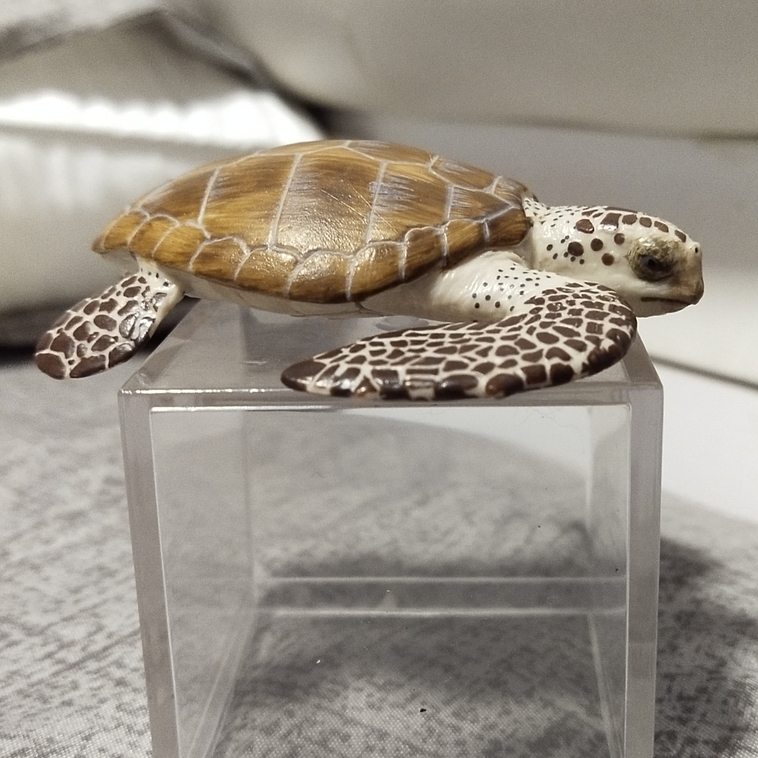
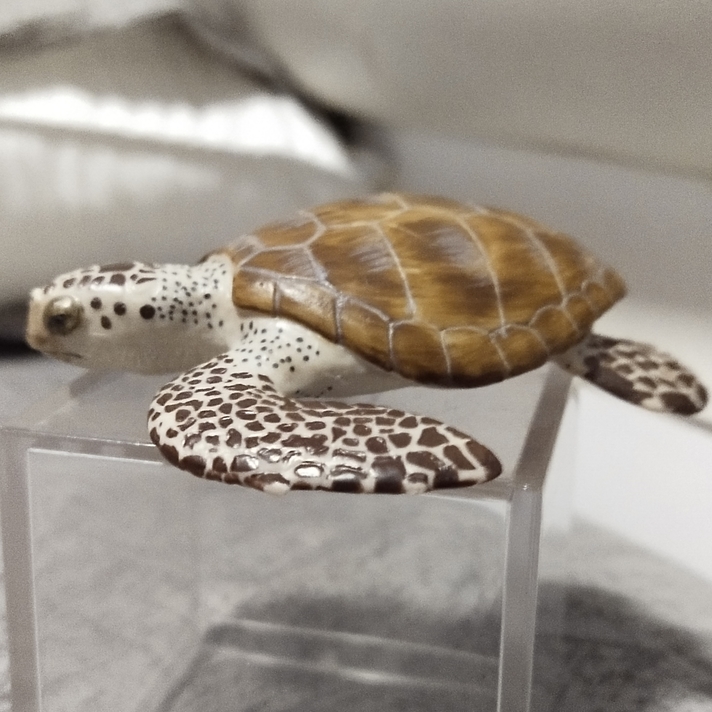
About the figure: this figure measures at 5.4 cm from one end of the carapace to the other, putting this figure at the 1:15-1:20 scale for a mature individual. This figure was released in 2008, alongside Papo’s first marine creatures like their humpback whale, great white shark, and male orca. This may have been the first chelonian Papo has made, and does it hold up well today? Well, let’s find out.
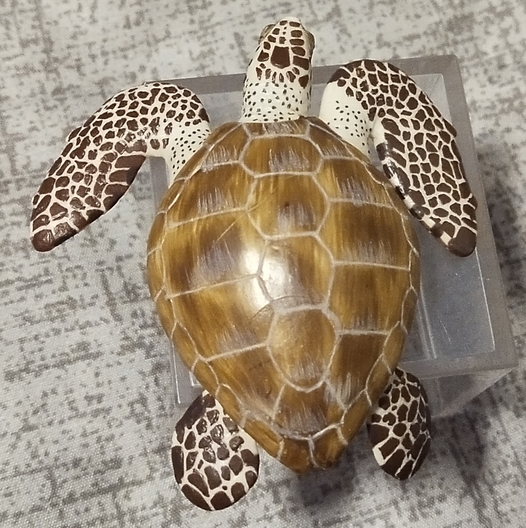
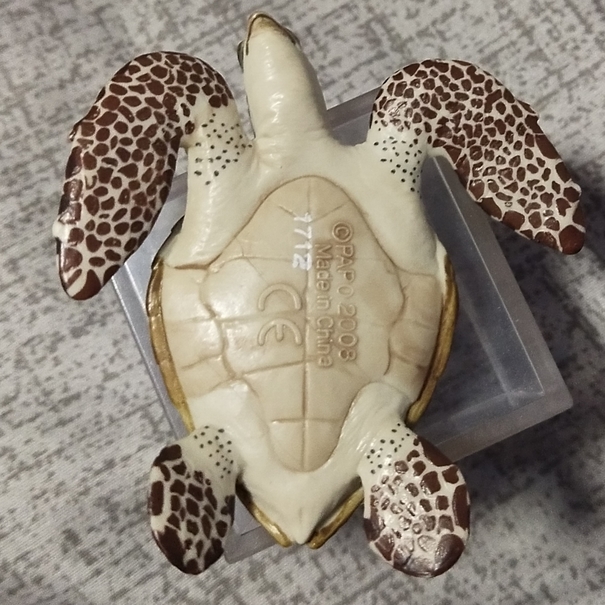
The head does look big in proportion to its body as compared to other sea turtles, which is a feature of the loggerhead sea turtle, although the neck looks a little thin when viewed on top. The eye is painted in gray with a black pupil and is outlined in a large grey acute, which is another plus. The beak is accurately done with a hooked tip, although it is blunt out for children’s safety. The nostrils are well done, although they could be a little closer.
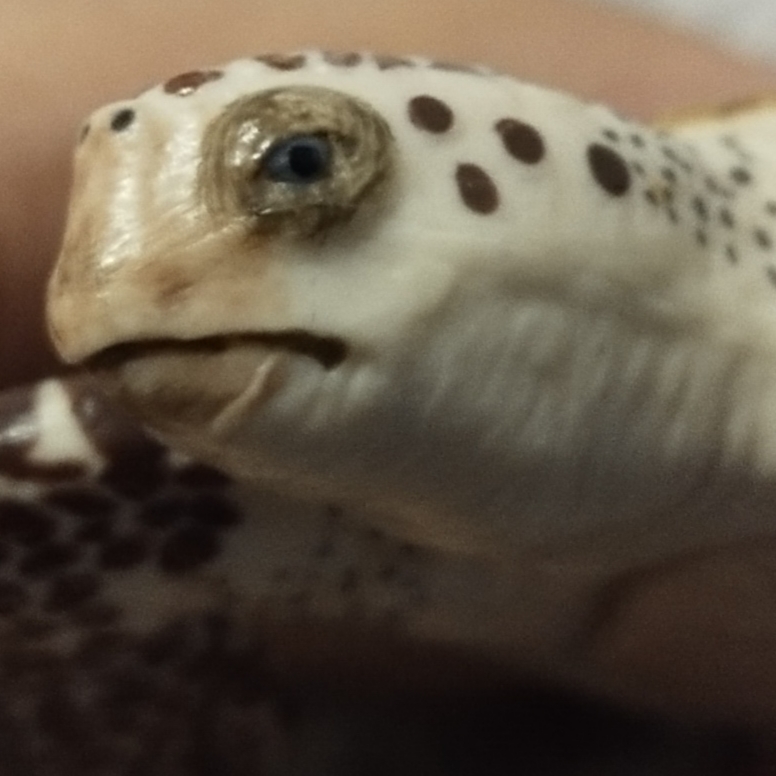
The carapace is brownish in color, but as most loggerheads are known from a reddish-brown shell, most consumers would mistake this as a generic sea turtle and one suggestion for Papo is to release a repaint of this figure with a reddish carapace. These turtles are known to have scutes on their shells that do not stand out, which is relatively well done on this figure. The skin is a light gray color and there is a correct number of central and lateral scutes: 5 central and 5 on either side of the carapace. The chocolate-colored scutes on the head could continue along the sides of the heads, which causes the correctly-numbered prefrontal scutes to be sloppily done as well as across the whole flipper, rather than leaving the part that connects the flipper to the animal smooth with little black spots. The back flippers on the other hand are really well done in terms of accuracy. The plastron is painted in a creamy white and there is also an accurate number of inframarginal scutes: 3 one each side of the plastron. This loggerhead is a female due to the really short tail, in contrast to males that have longer tails.
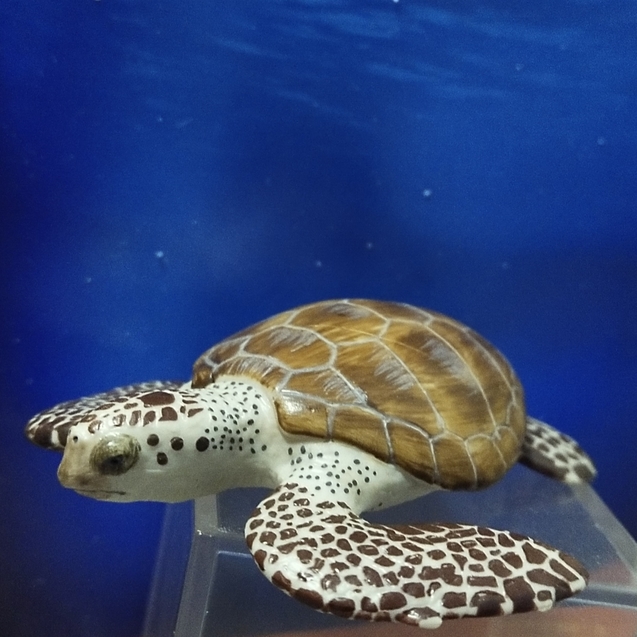
Overall, despite the minor inaccuracies like the scutes on the head and front flippers, this is a decent loggerhead sea turtle figure for its age. This figure is still in production as of 2021, unlike the leatherback turtle, and is still available for a relatively cheap price. If the inaccuracies bother you, you can consider the similar-sized Colorata loggerhead that is more accurate but much more pricey.

Well, that is it, this reptile is going to… Oh no! A hungry tiger shark found her, fortunately, like most sea turtles, is able to defend herself by using her shell as a shield.

Disclaimer: links to Ebay and Amazon on the AnimalToyBlog are affiliate links, so we make a small commission if you use them. Thanks for supporting us!




Easily superior to the CollectA version.